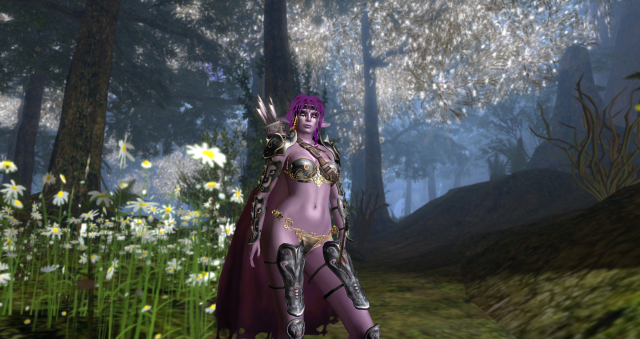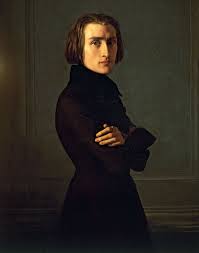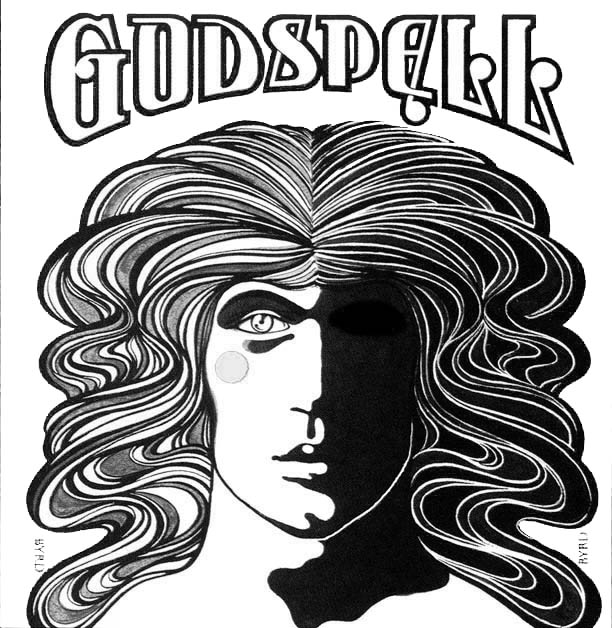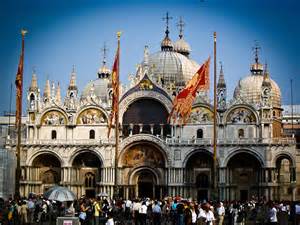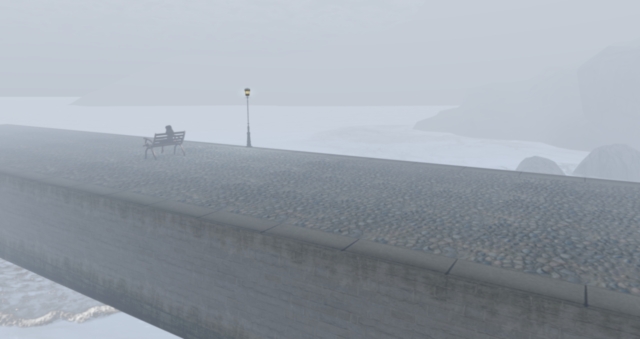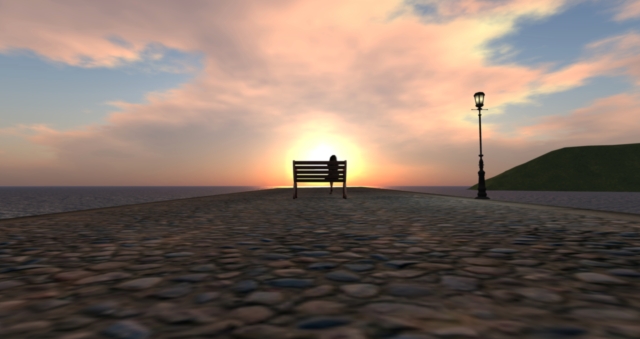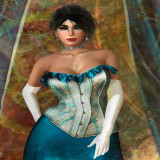Thanks to Diamanda Gustaffson for her guest presentation at our last Salon on early music! Tonight we continue our look at early music.
Tonight I am going to give a quick overview of Renaissance choral composers. I was going to get into some more detail, at first, but there is too much to cover in one Salon – and I am also not the expert Diamanda is in early music. So, instead we will simply go with an overview of some of the important composers and pieces that are generally ones I like. Hopefully, if you hear something you like, you will have the information to follow up..
First, however we will start with two pieces from the Medieval period, where you can hear that Western tonality and harmonies have not yet settled into what we now culturally feel is ‘normal’. In some ways, this may remind you of 20th century music when composers were trying to break away from those same tonalities and aural expectations.
Playlist (translations at the end of post):
- Musica Nova – Machaut: Messe de Nostre Dame: Agnus Dei (4:46)
- Musica Nova – Andrieu: Armes, amours / O flour des flours (10:10)
- Blue Heron – Dufay: Flos florum (3:54)
- The Tallis Scholars – Josquin: Missa Pange lingua: Kyrie (2:55)
- Hilliard Ensemble/Paul Hillier – Josquin: Mille regretz (2:02)
- Hilliard Ensemble/Paul Hillier – Josquin: Petite camusette (1:01)
- Hilliard Ensemble/Paul Hillier – Josquin: El grillo (1:49)
- Hilliard Ensemble/Paul Hillier/David James/Paul Elliott/Leigh Nixon/Michael George – Josquin: La déploration sur la mort de Jehan Ockeghem (5:46)
- Dennis Keene: Voices Of Ascension – Lassus: Justorum Animae (2:05)
- Dennis Keene: Voices Of Ascension – Byrd: Ave Verum Corpus (4:23)
- Dennis Keene: Voices Of Ascension – Victoria: O Magnum Mysterium (3:40)
- Dennis Keene: Voices Of Ascension – Sweelinck: Psalm 96, “Chantez A Dieu Chanson Nouvelle” (1:57)
- The Tallis Scholars – Palestrina: Missa Papae Marcelli: Kyrie (4:49)
- Dennis Keene: Voices Of Ascension – Viadana: Exultate Justi (1:59)
- Robert King: The King’s Consort – Gabrieli (G): Kyrie A 12 (7:10)
Guillaume de Machaut (1300-1377) – The French composer and poet Guillaume de Machaut is indisputably one of the most prominent figures of 14th-century music. In his numerous poetical and musical works we can recognize an ultimately cultured, educated artist, endowed with refined sense of noble beauty. His personality is a fascinating combination of the culturally and politically influential ecclesiastical elite and a vanishing world of medieval chivalry, embodying the conquest trips across Europe, heroic deeds, but also the warm tones of the love songs intended for noble and beautiful ladies.
Today his four-voice Mass of Notre Dame is a textbook example for medieval counterpoint, and has served sufficiently to maintain his reputation across shifts in fashion. Although two other cyclical masses predate this one, this is the first existing by a single composer.
Machaut is also considered the last of the line of Trouveres, the musician poets of the “Court of Love”
Franciscus Andrieu (late 14th centrury) – a composer, most likely French, of the late 14th century. Nothing is known about him except that he wrote an elegy on the death of Guillaume de Machaut (1377), a four-voice ballade Armes amours / O flour des flours, which is contained in the Chantilly Codex. He also may be tentatively identified as the Magister Franciscus, composer of two other ballades from approximately the same time, though the link can only be made by stylistic similarities.
His music belongs to that portion of late medieval musical practice known as the ars nova.
Next we get to our Renaissance composers.
Guillaume Dufay (1397-1474) was one of the most highly regarded composers of his generation, and one of those principally responsible for inaugurating the Renaissance in music. Dufay was one of the most cosmopolitan composers of his or any age, and his large musical output contains masterpieces in every genre from cyclic masses to isorhythmic motets to simply ornamented hymns and dramatic cycles.
Dufay’s music flows more smoothly than the characteristically complex rhythmic textures of the late Medieval period, and is marked by graceful melodies and a compelling sense of direction. Today, we value Dufay’s music not only for its grace and invention, but also for its significant historical position in the quickly evolving style of the early Renaissance.
Josquin Des Prez (1450-1521) was one of the most influential and widely regarded composers in the history of Western music, so famous that he is known merely by his first name. Josquin’s surviving musical output is very large, comprising masses, motets, and secular songs in both French and Italian. His style is marked by the technique of pervasive imitation, in which different vocal lines share material in a subtle interlocking manner. Most of his compositions are for four voices, though larger textures are not uncommon. Typically, Josquin utilizes pair-wise imitation between voices – such that the texture is divided into pairs of voices which interchange material in canon. This technique deliberately eschews the longer lines of the previous generation to concentrate on shorter motifs which lend themselves to various combinations of melody and harmony. This technique was to have direct consequence for the later Renaissance, and for the Baroque and Classical periods as well.
His influential contrapuntal experimentation and structural refinement lead many people to consider Josquin the greatest composer in the history of Western music, and indeed composers would be studying and utilizing his material directly for more than a century.
Orlande de Lassus (1532-1594) was a Netherlandish or Franco-Flemish composer of the late Renaissance. He is today considered to be the chief representative of the mature polyphonic style of the Franco-Flemish school, and one of the three most famous and influential musicians in Europe at the end of the 16th century (the other two being Palestrina and Victoria).
William Byrd (1540-1623) was the leading English composer of his generation, and together with his continental colleagues Giovanni Palestrina (c.1525-1594) and Orlando de Lassus (1532-1594), one of the acknowledged great masters of the late Renaissance. Byrd is considered by many the greatest English composer of any age. He wrote both Catholic and Protestant pieces, in his religious output.
Tomás Luis de Victoria (1548-1611) studied the music of Italian and Iberian masters, including Palestrina, Morales, and Guerrero, becoming a leading composer of the Roman School.
Victoria published his first book of motets in 1572, followed by the Officium Hebdomadae Sanctae in 1585, a collection of motets and lamentations for Holy Week Catholic services. These works established Victoria as the most significant composer of the Counter-Reformation in Spain, and one of the most highly-regarded composers of sacred music in the late Renaissance.
Jan Pieterszoon Sweelinck (1562- 1621) was a Dutch organist, teacher, and composer. He is widely considered to be the greatest of Dutch composers.
Sweelinck was extremely influential as a teacher, especially of German students (including Scheidemann, Scheidt, Praetorius, and Hasse) who would propagate his compositional techniques far into eastern Europe. He is one of the major figures in the transition from Renaissance to Baroque compositional styles.
Giovanni Pierluigi da Palestrina (1525-1594) was an Italian Renaissance composer of sacred music and the best-known 16th-century representative of the Roman School of musical composition. He has had a lasting influence on the development of church music, and his work has often been seen as the culmination of Renaissance polyphony.
Giovanni Gabrieli (1556-1612) is an important transitional figure between the Renaissance and Baroque eras and their associated musical styles. The distinctive sound of his music derived in part from his association with St. Mark’s Cathedral in Venice, long one of the most important churches in Europe, and for which he wrote both vocal and instrumental works.
Some other terms to know:
Chanson, (French: “song”) – French art song of the Middle Ages and the Renaissance.
Motet, (French mot: “word”) – style of vocal composition that has undergone numerous transformations through many centuries. Typically (but not always), it is a Latin religious choral composition.
Madrigal – A madrigal is a secular vocal music composition, usually a partsong, of the Renaissance and early Baroque eras. Traditionally, polyphonic madrigals are unaccompanied; the number of voices varies from two to eight, and most frequently from three to six.
TRANSLATIONS
Agnus Dei
Lamb of God, you who take away the sins of the world, have mercy upon us.
Lamb of God, you who take away the sins of the world, have mercy upon us.
Lamb of God, you who take away the sins of the world, grant us peace.
Armes Amours / O flour des flours
I dont have this at this time. 😦
Flos Florum
Flower of flowers, fount of gardens, queen of the heavens,
hope of pardon, light of joy, remedy of sorrows.
fresh branch and seemly virgin, model of goodness:
spare the guilty and bring them a reward in the peace of the righteous,
feed your own, succour your own, have mercy upon your own.
Kyrie
Lord have mercy
Christ have mercy
Lord have mercy
Petite Camusette
Little Camusette (you little minx), you will be the death of me.
Robin and Marion, they went off to the pretty (green) woods.
They went off, they went off arm in arm.
They fell asleep.
Little minx, you will be the death of me.
Mille Regretz
A thousand regrets at deserting you
and leaving behind your loving face,
I feel so much sadness and such painful distress,
that it seems to me my days will soon dwindle away.
EL Grillo
The cricket is a good singer
He can sing very long
He sings all the time.
But he isn’t like the other birds.
If they’ve sung a little bit
They go somewhere else
The cricket remains where he is
When the heat is very fierce
Then he sings only for love.
La deploration sur la mort de Jehan Ockegham
Eternal rest grant unto them, O Lord,
and let perpetual light shine upon them.
Wood-nymphs, goddesses of the fountains,
Skilled singers of every nation,
Turn your voices, so clear and lofty,
To piercing cries and lamentation
Because Atropos*, terrible satrap,
Has caught your Ockeghem in her trap,
The true treasurer of music and master,
Learned, handsome and by no means stout.
It is a source of great sorrow that the earth must cover him.
Put on the clothes of mourning,
Josquin, Pierre de la Rue, Brumel, Compère,
And weep great tears from your eyes,
For you have lost your good father.
May they rest in peace.
Amen.
Justorum animae
The souls of the just are in the hand of God,
and the torment of death shall not touch them.
In the sight of the unwise they seemed to die;
but they are in peace.
Ave Verum Corpus
Hail, true Body, born
of the Virgin Mary,
who having truly suffered, was sacrificed
on the cross for mankind,
whose pierced side
flowed with water and blood:
May it be for us a foretaste [of the Heavenly banquet]
in the trial of death.
O sweet Jesus, O pious Jesus,
O Jesus, son of Mary,
have mercy on me. Amen.
O Magnum Mysterium
O great mystery,
and wonderful sacrament,
that animals should see the new-born Lord,
lying in a manger!
Blessed is the Virgin whose womb
was worthy to bear
Christ the Lord.
Alleluia!
Psalm 96: Chantez a Dieu
Sing unto God new songs upraising,
Sing thou, O world, His glory praising,
Sing thou and bless His holy name.
Yea from day to day tell His fame,
Upon His great salvation gazing.
Exultate Justi in Domino
Rejoice in the Lord, O ye just; praise befits the upright.
Give praise to the Lord on the harp; sing to him with the psaltery, the instrument of ten strings.
Sing to him a new canticle, sing well unto him with a loud noise.
Rejoice in the Lord
